The Mirror





“Then you must teach my daughter this same lesson. How to lose your innocence but not your hope. How to laugh forever.”
- Amy Tan, The Joy Luck Club
Hey, Troubies!
We are in awe that we ’ ve achieved 25 editions of The Mirror Our magazine has been a beautiful way to connect with Troubies and showcase talent on campus. Pertaining to the theme, we owe the beautiful legacy of The Mirror to those who have come before us. Brooke Aprea ‘15, our predecessor, established the magazine, and we are looking forward to fostering the new generation of artistic Troubies. As you browse this issue, think: what does it mean to belong to a generation? What is my relationship with other generations? We hope you can use art as a mirror to your soul, like our contributors have for the past 10 years.
Love,
Lydia Vlahos and Stella DavenportEditors-in-Chief

TThere is significant value in women’s achievementsinhistory beyond recognition. Young girls learning this topic develop both confidenceandself-
worth.Inmanyfields,womenexemplify key attributes all present and future leaders should know, most significantly, emotional intelligence. Thelackoffemalerepresentativesin
theAmericanhistorycurriculumnegatively strains girls' self-worth and confidence. The past is used to derive strength and inspiration from those who came before us, and the disclusion of key figures hurt the people of the present time and their perceivedself-worth.
Experts worry that history and the importanceofthepastarebeingforgotten in the modern world. In Julia Watson’s TEDTalk“HowtoBuildaResilientFuture Using Ancient Wisdom,” she explains,“...inourrushtowardsthefuture, we tend to forget about the past.” Attention is focused primarily on the next breakthrough in technology or superficial information brought by endless social media platforms. The “rush toward the future,” as Watson explains, hinders the population from reflecting on the past to reflect on historical events so that the horrificoneswillneverrepeatandthe
triumphant ones will inspire and carry significantmessagestothefuture.Watson states, “History helps us learn who we are, but when we don’t know our own history, our power and dreams are immediatelydiminished.”Americanhistory shapes American culture because of its democratic founding. The American history of two hundred years ago, when America was declared an independent state,stilldefinescitizenstoday,inspiring change and empowering the leaders of tomorrow because of the democratic experiment.Women’sAmericanhistory,in particular,andhowitisdeeplyintertwined with America’s history is an important topic to promote and teach. In February 1980, President Jimmy Carter issued a Presidential Proclamation declaring the Week of March 8th, 1980, as National Women’s History Week, stating, “From the first settlers who came to our shores fromthefirstAmericanIndianfamilies ➢
Figure 1 BETTMANN ARCHIVE/GETTY IMAGES Written by Lydia VlahosObserved throughout the United States since the 1980s, Women's History Month was born out of a feminist push for equal access to jobs and education one of the main demands of the Strike for Equality march that filled New York City streets to capacity on August 26, 1970
PHOTOGRAPHBY
Figure 2
FRED W. MCDARRAH, MUUS COLLECTION/ GETTY IMAGES
who befriended them, men and women haveworkedtogether tobuildthisnation. Too often, the women were unsung, and sometimes their contributions went unnoticed. But the achievements, leadership,courage,strength,andloveof thewomenwhobuiltAmericawasasvital asthatofthemenwhosenamesweknow so well” (National Women’s History Museum). History “inspires” and gives “power” (Watson), but without the crucial subtopic of women’s history, so many women of the past’s stories get unsung; so many women of the future are left without empowerment, left without a role modeltoinspirethem.Thisgapinhistory, whichexcludeswomen,canbetraced.
Erica Feldman writes an article during Women’s History Month. She clarifies: “Engaginggirlsofallageswithhistorycan be tough since the material is often focused on broad themes (like war or politics) where women were formally excluded or because history has traditionally been written by men.” (Feldmann). Many teachers might find it challenging to teach women's history when historical textbooks give few resourcesandguides.However,thisisnot an excuse but a motivator; this is not a roadblock but an obstacle waiting to be overcome.Somuchofwomen’shistoryis leftdirectlyorindirectlyunsung.Nowisthe time to proactively include the stories of womenbecauseoftheirsignificantimpact on the next generation. American history needs to be used as a tool, not just to learn from the past, but to project the valued qualities of leadership into the future.
Thereismuchtobelearnedfromhistory, especiallywomen’shistory.Thisincludes
women's trials, struggles, goals, and achievementsfromeverywalkoflife,age, andcolor.Women'semotionalintelligence makesthemgoodleadersandrolemodels for all, especially young women and girls studyingtheirhistory.AstudybytheKorn FerryInstituteexplainshowmanywomen “have higher levels of emotional intelligence and self-awareness than men,”andthosewhohavehighemotional intelligence exemplify crucial “leadership skills” (Korn Ferry). In a modern world where women are given fewer opportunities to lead than men, women needtoberemindedandtaughtjusthow powerfultheirbiologicalassetsare.Young girls learning about strong women who exemplify valued characteristics such as high emotional intelligence is crucial to educationalandleadershipsuccess.
Furthermore, in a THNK article, Sophie Poulsen argues, “The world needs an empathy revolution – and women are going to make it happen. Forbes’ most powerful women in the world are champions of embracing empathy and vulnerability as strengths rather than weaknesses,” (Poulsen). Poulsen explainsfurtherthatEQoremotionalintell-
igence is a crucial factor in “professional success” (Poulsen). Women and their naturally higher EQ sets them apart from their male counterparts. Suppose young women are given a chance to recognize women of the past in a light that underlinesthenaturalcharacteristicofEQ andhowitcanbeappliedinaprofessional setting. In that case, women will be uplifted in confidence to do the same, to become leaders like their foremothers reflectedinthecurriculum.
Teaching young girls about women's history will also help them develop selfworth.Thehistoryyoungpeoplelearnwill reflect them Sharon Hall, an active teacher on Teachers First Blog, writes, “Recognizingtheachievementsofwomen inallfacetsoflife…hasahugeimpacton the development of self-respect and new opportunitiesforgirlsandyoungwomen.” Young girls gain self-respect by acknowledging women's roles in all advancement and fields because people like themselves have achieved so much. Thatself-respectwillactasatooltoopen theireyestoalltheopportunitiestheycan aspiretosucceedjustastheirrolemodels andbeyond.InanarticlebyTheNatio- ➢
nal Women’s History Alliance, Myra PolackSadker,anAmericaneducatorand researcher who published extensively on sexismintheAmericaneducationsystem, isquoted:“Eachtimeagirlopensabook and reads a womanless history, she learns she is worth less.” Self-worth beginsintheclassroom.Whenyoungpeo-
“Each time a girl opens a book and reads a womanless history, she learns she is worth less.”
ple cannot see themselves cucceeding in other through history, the door to believingintheirability,followingpassion, and accomplishing all will close. When womenofeverybackgroundandraceare notrepresentedinhistory,younggirlswill have trouble attaching and identifying themselves with success. The National Women's History Alliance further states, “We draw strength and inspiration from those who came before us – and those remarkable women working among us today.”Byseeingotherwomen,muchlike themselves, in history, young girls will be immediately inspired and uplifted. Enthusiasm to seek out all opportunities comes from the knowledge that someone justlikethemselvesdiditandsucceeded; theyarejustascapableasanyotherman orwoman.
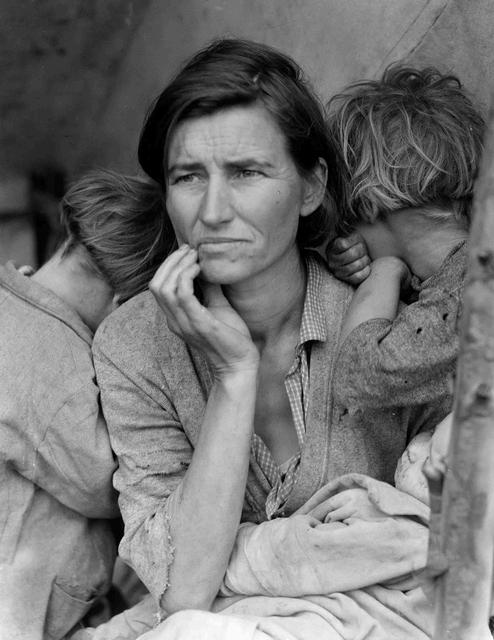
To explain further, seeing oneself in history motivates one to inspire change and be hopeful for the future. History empowersyoungpeopletobethechange theywanttoseeinthefutureastheydraw inspiration from the past. Variety in historical education touches and empowers a more extensive range of students. Malala Yousefizi, a famous women’sactivist,autobiographicalauthor, and winner of the Nobel Peace Prize, is quotedinaMarieClairearticlestating,“I tellmystorynotbecauseitisunique,but because it is the story of many girls,” (Haddrick). Yousefizi wants to inspire other girls with her heroic story, but the conflictshestooduptowasnotunique;it was an experience thousands of girls all over Pakistan were and are facing. The mostempoweringstoriesaretheonesthat the most people can relate to; the most relatablestoriesaretheonesthatneedto be taught. Erica Feldman, a Strong Women Strong Girls writer, explains, “By illustrating how girls and women have always impacted the world women’s historians offer narratives of empowerment.”(Feldman).“Narrativesof empowerment” are crucial in uplifting the nextgeneration.Thestoriesofwomenare essential to the history curriculum to empoweryounggirlstobecomeagentsof changeintheirfuture.
Lastly, education on women’s history furtherswomen'srightsinallaspects,i.e., the workplace. Gerda Lerner, considered one of the first professional female historians,oncesaid,“Women’shistoryis the primary tool for women’s emancipation” (Feldmann). Education will alwaysbeatoolforwomentofurthertheir rights. Without the constant reminder of strong women in history and how many systemsstillneedtobechanged,howcan womenfighttowardsfurtheremancipation (intheworkplace,ineducation,etc.)?
Awebsitewascreatedthroughtheefforts ofstudentsatUNC-ChapelHill,enrolledin the course HIST/EURO/WMST 259 “Towards Emancipation? Women in Modern European History” by Dr. Karen Hagemann and James G. Kenan (DistinguishedProfessorofHistory)inthe UNC History Department. In the project statement, the students explain: “We believe recognizing the victory of women along with the struggles we’ve overcome andtheoneswestillfacetodaywillallow us to achieve future goals such as real equalityinoureverydayandequalpay.If we study women’s history, we can learn ourcurrentfightsaren’tnew.Theyhavea past.”
There are many ways to introduce more variety in a history curriculum, ranging in allages,suchaspresentingtheAmerican history of not just famous women but lesser-known women who are equally important.Manyknowlessaboutessential women who are a part of already marginalized groups such as the African American or the LGBTQ+ communities. Many have heard of famous American women such as Amelia Earhart or Rosa Parks. “However,” teacher blogger SharonHallwrites,“therearemanymore storiesofstrongwomen,suchasMadam Walker, that aren’t as well known. These are the tales that have the possibility to intrigueandinspiretoday’sgirls.”Madam Walkerisafantasticexampleofawoman whosestoryisnotwidelyknownbutcould beasimpactfulasanyother.Thewebsite HISTORY explains how Madam C.J. Walker became the “first black,” selfmade,“womanbillionaireinAmerica”and how her skills of self-promotion, entrepreneurship, and philanthropy made heranaccuraterolemodelofthemodern era (History.com editors). Another example of one of these women is Dorothea Lange, a famous photographer during the Great Depression and World War Two, but although her work is well known, her name, story, and legacy are not. A famous photograph of hers is “Migrant Mother:” a powerful image that represents the female struggle of motherhoodintryingtimes.Theamountof emotion Lange could present in her work isempowering.DorotheaLangeprese- ➢
Figure 3 Migrant Mother, Nipomo, California, photograph by Dorothea Lange, 1936; in the Library of Congress, Washington, D.C.nts young girls with a role model who is unafraid to share her emotions in her artwork and demonstrates women's value anduniqueperspectivesinhistory.
Famous women are only a piece of the historical puzzle. Another way young peoplecanlearnaboutwomeninhistoryis to be taught about the women heroes of everydaylife.InherK-12-basedblogpost, teacherSharonHallexplains,“Sometimes well-known heroes seem larger than everydaylifeandnotrelatabletostudents. Take advantage of the many available primary sources to help students find heroesinallwalksoflifeandallcornersof the globe” (Hall). Recognizing influential womenonalocallevelisjustasvaluable. These women foster a great sense of similarity because of location and experience. Students can look into their families, recognizing their ancestors' strengths. The National Women's History Alliance states, “Recognizing the dignity and accomplishments of women in our own families and those from other backgroundsleadstohigherself-esteem
among girls and greater respect among boys and men. The results can be remarkable, from greater achievement by girls in school to less violence against women,andmorestableandcooperative communities” (National Women’s History Alliance).Itisessentialnotjusttofocuson empowering young girls with women's history but also on educating young boys so they can become comfortable with women's success, gain respect for the women in their lives, and develop a greatersenseofempathyforthestruggles whichcomealongwiththerealityofbeing awomanthroughouttime.
There is great importance in teaching American women's history to young people because of the role models it gives, the self-worth it cultivates, the empowerment it inspires, and the emancipation it leaves behind. Gerda Lerner, an Austrian-born American historian, and women's history author, is quoted: “Everything that explains the world has, in fact, explained a world that doesnotexist,aworldinwhichmenareat
“Women’s history is the primary tool for women’s emancipation”
the center of the human enterprise, and womenareatthemargin“helping”them. Such a world does not exist — never has,” (Feldmann). Lerner explains that society must teach young people the actual reality. A singular factual reality needs toberevealed: women, whomake upfiftypercentofthepopulation,makeup an essential part of history. The history recounted cannot be one point of view; it cannot show only part of the picture. All stories need to be told to create a more empathetic, tolerant, and respectful society for all walks of life. These stories can be told through history and start with women.

Figure 4
In 1909, Nannie Helen Burroughs opened the National Training School for Women and Girls, offering a curriculum of vocational and academic training for African American women For much of U S history, women and people of color were denied equal access to education and created their own opportunities instead.
PHOTOGRAPH BY LIBRARY OF CONGRESS, CORBIS/ GETTY IMAGES


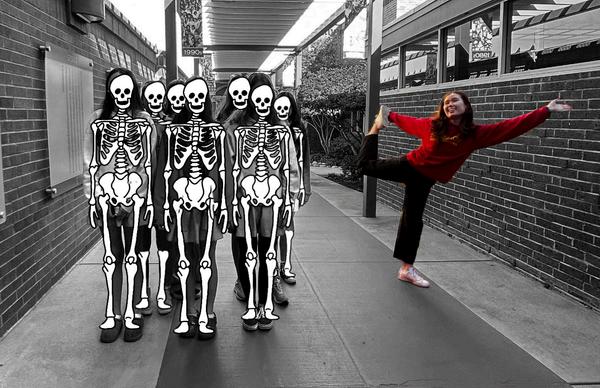


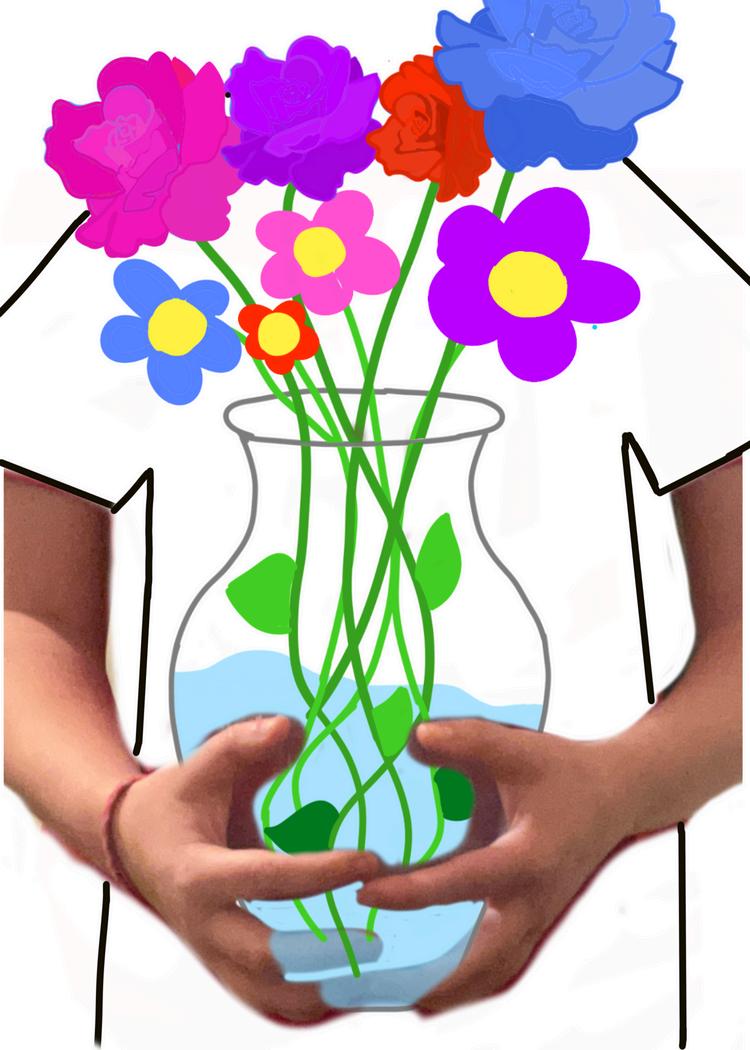
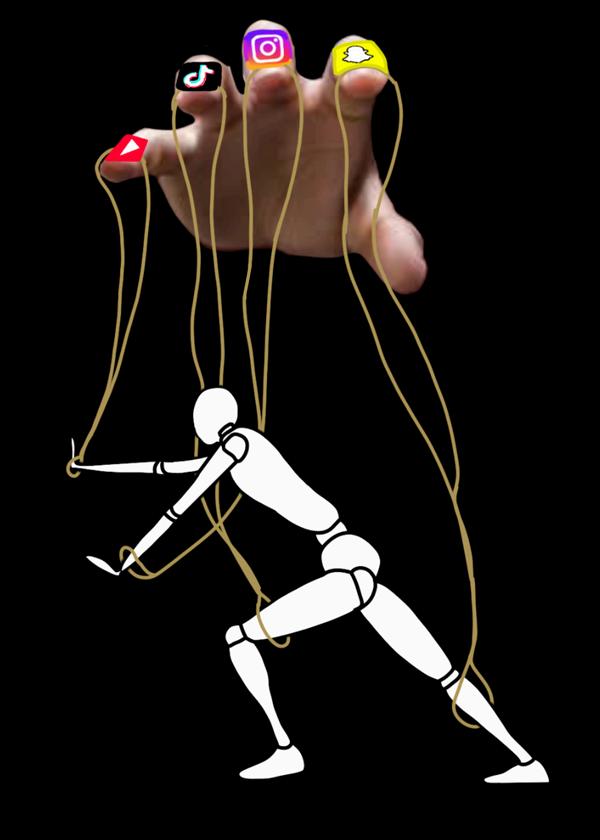

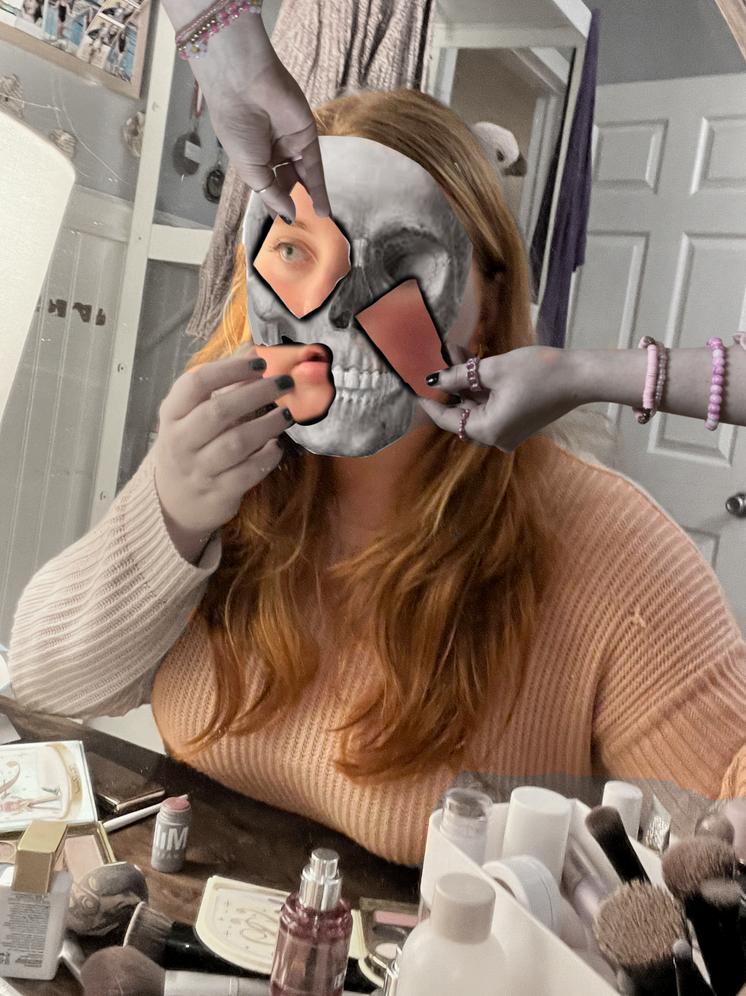
Four years old, waving to the Air Traffic Control Tower where I am now unsure if civilians are allowed
Maybe it was a dream, or seen through my own eyes,
But I clearly remember the feeling of everything I had ever known being left behind with a seventeen hour flight
America is all I will ever remember as my daily life
But America will always feel foreign to me
Or perhaps I am alien to her
The hot summers spent with my family as I will feel more in place, but still like I don't belong
My country says, “too American,” and America says, “not enough ”
I will stay confused about grammar rules in my two languages, fluent in neither, fluent in both
Over the weekend I will develop an accent and lose it throughout the week
So much on the line This or that: I am the “or”
The sharp syllables of my name will be consumed and spit out as watered down soup that has been seasoned with fear of too many consonants sloshing between your teeth
No matter how much you ask me how to lay the letters on your tongue
I know they will never fit in your mouth
What people do not realize is that not all immigrants look the same
You prefer to oppress my culture or accuse me of being different
What you simply don’t understand is the beauty of diversity and a variety of backgrounds, which in reality, makes us one
W H E R E I S M Y
In this story, I talk about “ my mind,” which is hers as well, her being the author and a physical person you will see in some photograph under the name “Lydia Vlahos” in a yearbook I often say “My mind” or “mine” because grammatically, the appropriate pronoun is “it ” This is a travesty as I believe my mind is the most human out of all of me, and for centuries, women have been told to quiet their minds and have been objectified
“It” will not do
And “she” or “her” is out of the question; my body can be a “she” or “her,” but not my mind, as this author believes it holds power and presence beyond the physical and a pronoun of material, trivial gender would strip it of its spiritual higher nature
So “ my mind” is the subject, which is also hers, which is also the author, which is also me (so please do not forget)
My mind holds my memories, my soul, my emotions, my heart, and my passions; a spinning web of neurons and synapses and individuality as the human mind is like no other creature, and my mind is like nothing else, unique and full of wonder, wonder you will never experience unless the author chooses to share
Written by Lydia VlahosMy mind, which belongs to her, a vault of morning dew and constellations, grew restless and walked east to west, while staring at the whiteboard and picking at her nail polish
My mind ambled by McKinnly Park, where elementary-school-wide picnics were held at the end of every year She and mine, with ribbons in her hair, would scale an ancient wooden playground A whole other world hid under platforms where slides and ladders spiraled down Dark wooden beams and crate-like boxes formed tunnels, passageways, dungeons, and secrets. She and mine crawled through the shafts and chased between the rays
Now, my mind approached the playground past the ducks and turtles in the stained glass pond, reflecting greens in all shades Suddenly appeared a wish of breadcrumbs, like the time daddy bought a whole loaf from the convenience store under the freeway, and the girl ripped off chunks to feed the mama and all the babies before the sign with the large letters and the red slash was erected
Passing the pond, my mind approached the castle with nostalgia while learning iambic pentameter at a school desk uptown, and my mind soon remembered the fortress burned down There were rumors of a cigarette reducing the magical keep to char and ash, and the girl would see a scaley black dragon with sharp spikes if she squinted at the skeleton A stark, shiny structure now perched in its place, colorful metal spials reached towards the sky The annual picnic ended when a boy found a heroin needle on the ground. No new memories were formed to go along with the metal spaceship It sits foreign on a cinder
grave, unknowing of the little girl who played on its predecessor
The mind, which was ours, sadly moved on, reality not reflecting the joyful images of Mary Janes, childish whoops, and cupcakes too big for sticky hands
Still restless, the walk resumed, east to west, uptown to mid Under the freeway past the rumbling motors of people getting to places important on Monday and then having to get to those places again on Tuesday
A few more blocks passed with recognition until a school was spotted, three stories of tan concrete Commanding a whole block for a playground of black asphalt, three big oak trees, 15 classrooms stacked tall, a gymnasium, and an imposing Catholic church at the rear with three double doors at the top of twelve steps facing a park
And here my mind learned for nine years how to read a book without pictures, how to write a paragraph when you are told, how to type without looking down at the keys, how to understand letters in math, and learned for nine years how Jesus Christ died for our sins and rose from the dead And here she and mine learned how to talk when appropriate, laugh only on prompt, and befriend mean girls so their knives do not point toward you With the rules of no talking and raised hands, the girl in her plaid skirt and polo shirt struggled to be a blind rule follower The nine years of being ignored for incomplete agency and mind tasted of sulfuric in the back of mine The school had memories of the little girl my mind wished did not exist
My mind bowed solemnly as any veteran must do, turned swiftly round, and carried
I on the journey, east to west, uptown to midtown to down My mind passed the theater, mommy ' s work, the county jail, the city library, and finally, ducked under the second freeway
The final destination was reached: east to west, uptown to midtown, downtown to old The train museum loomed large in red brick and mortar, looking as it had when Nana first took the girl and her brother to see the shiny engines and dozens of railway cars
My mind let out a sigh of relief and marched inside
Turn right up the stairs, across the hallway overpass, and look at all the little models and people in the glass cases, frozen memories in time, but wait, that is not the most exciting thing Run down a carpeted ramp Nana with a stroller at your heels, and stop with wonder at the snowy mountains being carved so the train can steam through. The cave 20 of you stacked on top of each other. Take a moment of silence for the Chinese workers who look tired in the photographs Nana reads the information slowly about dynamite, pickaxes, rock climbing, and all the lives lost My mind danced with practiced steps, waltzing through the museum ’ s halls and running alongside the girl with her brother in the stroller and her Nana with a camera to catch every smile
The choreography is not over Oh, how the steps fly by Run through the tunnel toward the golden spike. Lean your head back so your chin points to heaven, but your eyes can see the tops of the trains
My mind knew the dance's climax because she and my mind always saved the best for last, which was the train with all the people doing train things as they rode through the country and ignored the modern people filing down the aisles
My mind fell silent, and so did she as they walked hand in hand Mine a ghost Her a memory My mind and her tiptoed by the man sleeping in the sleeper car, waved hello to the woman and her child sitting in a passenger seat, and gazed at the chef in the kitchen car as he stayed frozen in fall, bowls and plates piled high in his arms; figures of wax frozen in time as the little girl walked past
Wanting rest, my mind stopped and waited on a seat next to the woman and her little boy playing cup-and-ball. Then, mine watched silently as if wax, too.
The same little girl came along again and again with her Nana and her brother in the same dance, and they grew taller and calmer and stranger and wiser and angrier and sadder.
Soon, the little girl had two brothers, and her Nana still pushed the stroller with a camera The little girl passed in a winter coat with her hair braided to the end of her back The little girl passed in a sundress, her hair buzzed, eyes forward, standing tall. The girl passed with a phone in her hand. The girl passed with glasses perched on her nose
Soon, her nana passed with the littlest brother alone
My mind grew cold in the seat as the memories plodded by My mind turned to the woman by the window, and I asked if she had seen this same sight and if she was also sad at how the time had marched
The woman responded to my mind to give comfort and relief. She said yes, she remembered, and with fondness She always thought the girl would make a perfect friend for her son As mothers do, she commented on how the girl grew into a beautiful woman, even with sadness behind her eyes. But, she said with a melancholy smile, I am glad she is not stuck as my son is, never seeing past this car and never growing up
My mind then went to the chef, preserved perfectly in mid-fall, and asked about the little girl. He said he remembered the first time they met when she laughed out loud at his predicament He said the second time was a meeting of friends; each time she looked, it was with a desire to help steady him and ease his load The chef was sad because her visits were rare, and she looked older and sharper each time. But, he said with a shaky conceding breath, I am glad she is not stuck in a fall, frozen for the amusement of others
My mind was satisfied and tired after a long
day of remembering; said goodnight to the chef, the mother, and the little boy with his game, went to the sleeping car, laid down beside the frozen man, and wept under unmoved sheets, at the train museum, in oldtown, by the river, while she sat in a classroom confused to why her eyes were red



Brooke Aprea founded “The Mirror” in Fall 2013

The First Edition in Published

An excert from the forward
Welcome to “The Mirror” Magazine. The title signifies how the magazine reflects the literary and artistic works the students of St Francis High School wish to publish. The theme of the first edition is “New Beginnings.”



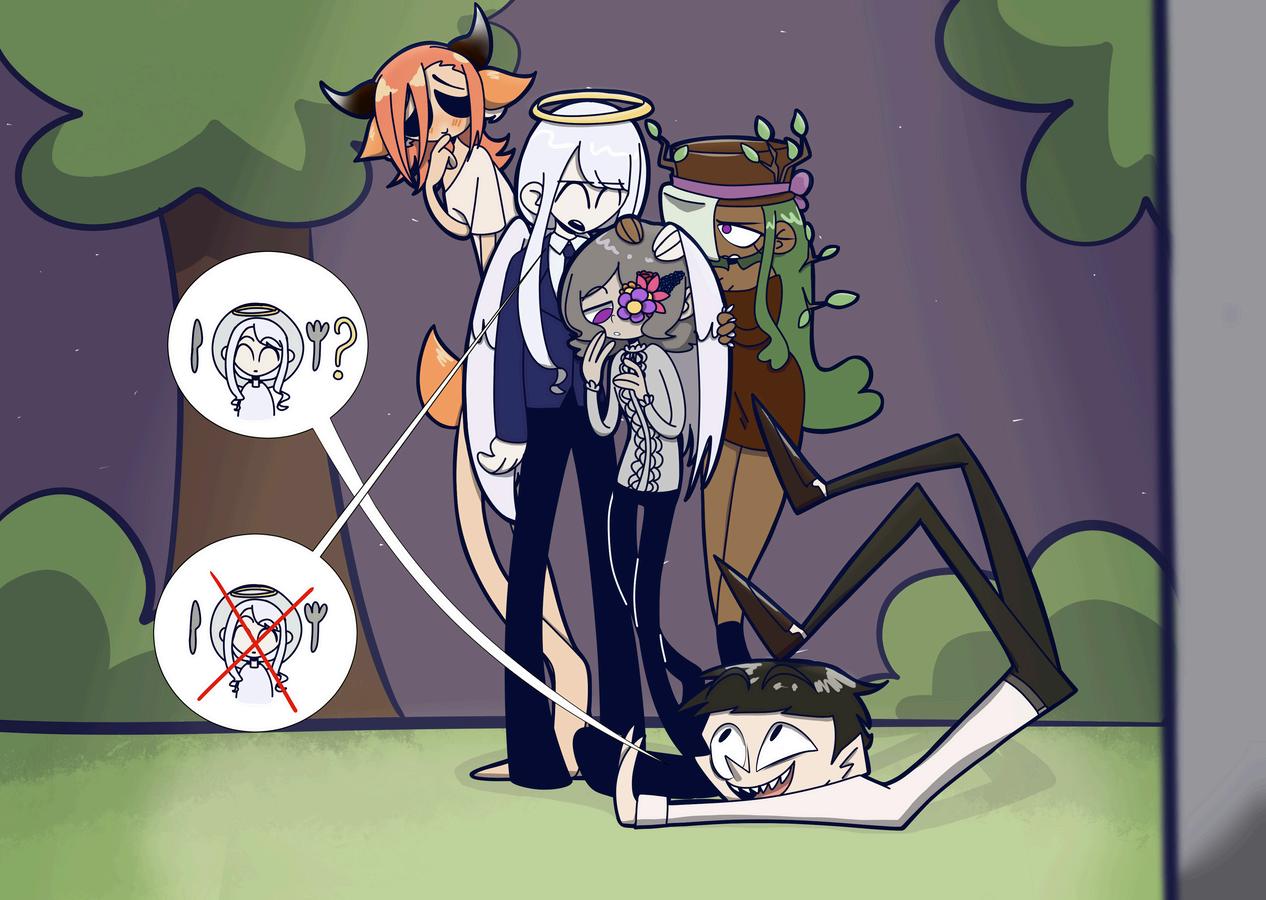


2024 2024
Ifeelmortalityatthecornersofmyconsciousness Cansmelltheflowersplacedonmyyetduggrave
Timeisqueasyfromthesomersaults AndIfromthedespair
Isay:
I'vefounddeathbeforeitfoundme
Nestinginmyfrontallobeonalonelynight Tracingdownmyspinetomeettheshowerfloor
OrIcry:
Imissthemethatneverexisted
Theonewhofoundoutearlyallthesecretstotheuniverse Likehowtoliveinit Withoutchokingoneverybreath
(Myownmemoriesbecomeforeignobjectsinmymind
Asothersbleedoutuntilcoldtothetouch Maybebecausethefutureisneverreallyunknown
Whilethepastisnevertrulyunderstood)
ButwhenIclosemyeyesforabeattoolonginabusyrestaurant
Halfpast6:00,despitealltheodds
IthinkIcanfeelHumanitysavingitself
Canfeelthehundredmillionbeatsofahundredmillionpulses Makingitallokay
Thefuture,coldandoilyfillsmylungs
AndIsee,foronesinglehalfsecond,aworldwhereWelive Andkeepliving
WewatchHalley'sCometpass
Threethousandthreehundredandthirtythreemoretimes
AndonthefivehundredthousandthanniversaryoftheHumanspecies AlittleGirlplaysinthegrass
Timeisqueasyfromthesomersaults Mysicksadheadinsistsitdo
Myvisionsofdeathandpangsforthepast
Mypurgatoryinfestedribcage
HeadthattrustsinaHeaven Andfeetthatdon'tbelieveinHell
ButjustasI'vehatedGodthewayonlyatruebelievercan I'velovedhumanslikeonlyadesperatecreaturewill AndhavesatsorryandhopefulattheemptyChurchofmyself Confusedlikeonlyatruereligionwillallowyoutobe
Itaketheshadowsofmybedroomandkissthem Overandoverandover
Andtakethetrenchesofmymind Andsay:seelightseelightseelight
Ipromise:
ThatonedayIwillreconcilewithtime,willfindonegloriousmoment WhereIamhere Justhere
Andwillthenduplicatethatmoment Asmanytimesasittakes
Until
YouknowI’malildelicatelikeasnowflake
Mybonesdon’tbreakbutmybrainalilscattered “Don’twearyourwearurheartonursleeves”butminearemorespreadoutonasilverlookinplatter
Theysaywe’realluniquelikesnowflakes, withintricatedesigns‘ndifferentpatterns butwelow-keyallsharethesameHeartache
Weinaworldthat’sboundtoshatter PeopleBeggingfortheylivestomatter
Tellingmybrotherdon’tdiePlease Everytimehegrabthemcarkeys
CanweatLeasthaveaforceofpolicethatcareaboutincarcerationjustasmuchastherelease
ButIain’tmeanttogetthatdeeptho Youalreadyknowhowthegamego It’sacoldworldbutthat'sbecausewe’restandingintheshade Stepoutyou’llseealltheBeautygodmade
Wearyourheartonyoursleeve
Speakaboutthethingsthat’sonyourmindIpromiseyou’llfeelrelieved BethechangeinthewordthatyouKnowyouwannasee
ShallIcomparetheetoasummer’sday?
Thoughourshortlovewillneverbethesame
Forthysweetsoulwastessoswiftlyaway
Ishouldhaveknownthatthoucouldneverstay
Thylovelybodyshattersallinshame
ShallIcomparetheetoasummer’sday?
Menpraytogods,buttowhomdogodspray?
Withadiscusthrow,theworldforgetsthyname
Forthysweetsoulwastessoswiftlyaway
Youngirisessproutwherethouwasmadeprey
InEurotas’streamwhichthybloodstains
ShallIcomparetheetoasummer’sday?
I’dnotslaythee!;yetdespitewhatIsay
Hewhocommandslightassignsmetheblame
Forthysweetsoulwastessoswiftlyaway
Withthineachingabsencetheworldturnsgray
Iweepforthyfate,yetburymypain
ShallIcomparetheetoasummer’sday?
Forthysweetsoulwastessoswiftlyaway

themirror@stfrancishs org stfrancishs org/mirror